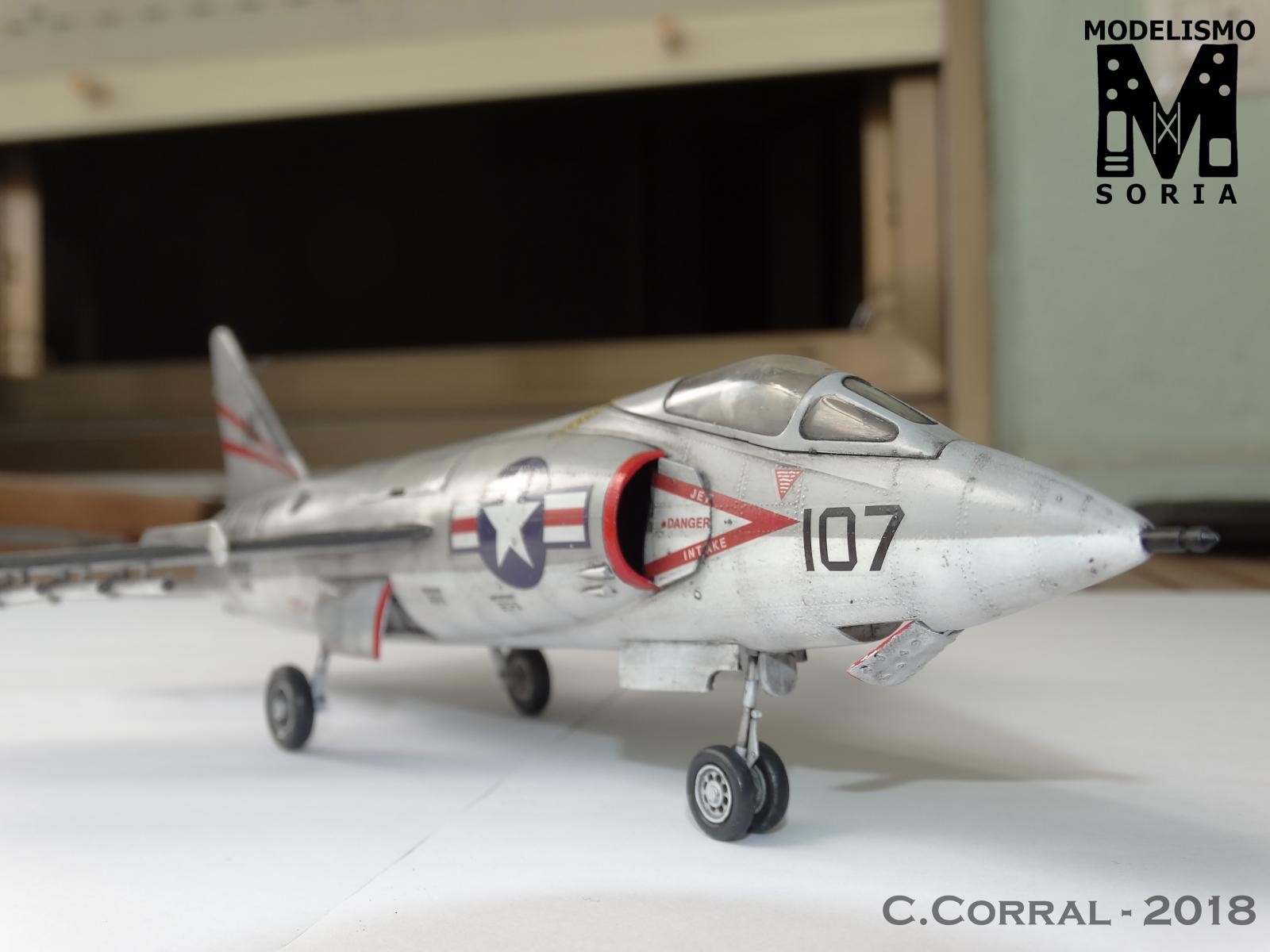F11 Fighter Jet - In the early days of jet fighters, rumors began to spread about a self-shooting Tiger Grumman F11F. But is it possible? Image by US Navy, Public Domain, via Wikimedia Commons.
In the early 1950s, aircraft designers began modernizing the F9F-6/7 Cougar, improving it with greatly reduced drag and supersonic speeds. When the redesign was completed in 1953, the result was a completely different aircraft from the Cougar. This new model is equipped with full-span leading edge strips, trailing edge fins with spoilers instead of wheels for roll control, and foldable flaps for easier storage on aircraft carriers. On its maiden flight in April 1955, the completed Grumman F11F Tiger demonstrated its supersonic capabilities by approaching the speed of sound (Mach 1). The Navy was impressed and placed over 400 development orders for service and became the Blue Angels flight crew aircraft.
F11 Fighter Jet

Despite its initial popularity, the Tiger quickly proved flawed: its engine was unreliable, its range and durability were inadequate, and its performance was inferior to other aircraft produced at the time, such as the Vought F-8 Crusader. Production ceased in 1959. The Blue Angels continued to fly for another 10 years before being replaced by the McDonnell Douglas F-4 Phantom II. While its period of service was short, it left a legacy of early supersonic speeds—mainly because it was the first aircraft to ever fall fast.
Fs2004 Grumman F11 Tiger Blue Angels
On September 21, 1956, young US Navy test pilot Tom Attridge took off from Long Island, New York for a weapons test over the Atlantic Ocean in his F11F Tiger (BuNo 138620). He climbed to 20,000 feet, began a Mach 1 dive, and fired two rounds with his 20mm cannon at 13,000 feet until he ran out of ammo. He continued the dive and at 7,000 feet something hard hit his windshield. It must have been a bird, he quickly realized he had a big problem on his hands - his plane was losing power.
He pulled it up, dropped it to 230 km/h and started returning to base. Unable to maintain altitude, he tried to apply more power, but the power could not exceed 78%. The plane landed in a sea of trees. About a kilometer from the runway, it went 300 feet and caught fire. It was a complete loss. Attridge suffered a broken leg and several vertebrae, but fortunately survived. It wasn't a bird that knocked him down, as he later learned. The crash was apparently caused by a much more surprising source: their return.
Many believed that it was impossible for an airplane to exceed their sphere, no matter how fast it flew. After all, the speed of an average projectile was roughly 1,700 km/h, and Mach 1, at which Attridge was moving, was 768 km/h. That's a difference of almost 1,000 km/h. Obviously, this proved that the damage was caused by something like birds or even small meteorites. Still, this theory was wrong.
The projectiles Attridge fired while traveling at 1200 km/h left their guns at about 2,000 miles per hour. However, soon after they were fired, they encountered enough air resistance to create significant drag. caused. curling down - directly into the flight path of the aircraft they were hit. As the bullets descended and their speed dropped to about 400 km/h, the Tiger also descended, but at an accelerating speed of 880 km/h. began descending, Attridge was hit three times. The first bullet pierced his nose cone, the second went through his windshield, and the last one hit the right engine intake directly.
F11f 1 Tiger
The Navy rated the incident as a one-in-a-million event and was confident it would not happen again. But Attridge was less convinced. "At the speeds we fly today," he said later, "it could be copied at any moment." he was right. In 1973, it was shot down by another Grumman test pilot missile using the F-14 Tomcat in California. Fortunately, it was a fake missile and the pilot was able to launch it to safety. More recently, in 2019, a Royal Netherlands Air Force F-16 accidentally fired its 20mm rotary cannon, and the pilot was able to land safely unharmed.
Aircraft weapon systems today rely heavily on missiles, not just projectiles. Whether short-range heat seekers or long-range radar-guided missiles, missiles have many obvious advantages, such as their speed, which can easily evade any projectile or aircraft. It was specially designed to be faster than the aircraft from which they were launched. Fortunately, the protocols are now in place to prevent self-collisions, so hopefully no more pilots will crash themselves.
As for Attridge, who has always been referred to as the "pilot who shot himself", the incident cast a small shadow over his career. It returned to service less than six months later and eventually began work on the Apollo Lunar Module. He flew west in 1997 at the age of 74.

Second degree assault washington state, 2nd degree assault sentence, 2nd degree aggravated assault, 2nd degree assault mn, 2nd degree assault, 2nd degree assault definition, 3rd degree assault washington state, 4th degree assault washington state, 2nd degree felony assault, 4th degree assault washington, what is assault 2nd degree, 2nd degree assault charges